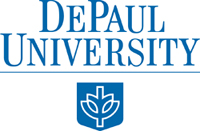View Session Details and Presenter’s Bio.
Why is branding in higher education so challenging? In most organizations, the brand is the outward expression of the mission, but that isn’t always the case in higher education. Why? Because our missions don’t always play well to the larger body of prospective students. Further, we have a tangled web of audiences that all want different things from us. Finally, we have decentralized organizational structures with no clear process for gaining agreement on what our brands are.
So how do we overcome these challenges and create distinctive, ownable, benefit-oriented brands? First, we need to understand what a “brand” is. A brand isn’t how many buildings we have or how many faculty we have, but rather a brand explains who we are and what benefits we offer our students.
DePaul’s process for developing a university-wide brand took five years and essentially had three steps: The first step was to understand what people thought about DePaul and its competitors, specifically students, alumni, faculty/staff, and the community. The second step involved identifying the gaps between how DePaul wanted people to think about the institution and how they actually think about it. The final step addressed those gaps.
In the first phase, DePaul’s rebranding team conducted 28 interviews with internal university leadership. They used this audience as a starting point for defining their language. In the second phase, they conducted a market audit. by conducting 19 in-depth interviews, 13 focus groups, and an online survey of both internal and external audiences. The team brought everything together in the final phase and identified key messages that defined the brand.
When conducting their brand research, DePaul gave people a list of 44 characteristics and asked them “how important are these characteristics are to you in determining a university’s reputation.” They then asked that same audience how they associated those characteristics with DePaul and key competitors selected based on their similarities and proximity to DePaul. What they found was that people ranked academic reputation, faculty contributions and interactions, and a strong price/value relationship were the most important elements in determining a university’s reputation. What was less important were prominent alumni, school pride and athletics.
In the next phase, DePaul mapped the characteristics in four quadrents:
- What characteristics are not associated with DePaul but are defined as important to people
- What characteristics are associated with DePaul but are not important to people
- What characteristics are associated with DePaul and are important to people
- What characteristics are not associated with DePaul but are not important to people
DePaul then identified the characteristics that they “own” (i.e., those that are associated with DePaul and are important to people) and defined the benefit they provide to their audience and the role those characteristics played in their brand. From that, a unified brand positioning document was framed. DePaul did not focus group test their final product. Instead, they asked internal audiences if the unified brand positioning document “fit” with what internal audiences felt was the DePaul brand.
The brand positioning was approved by senior leadership in December 2010. Since then, DePaul launched a website introducing the brand to its internal audiences and offering them training on using the brand. They recently began an advertising campaign utilizing the newly identified brand elements–a campaign designed to raise brand awareness while also serving as a recruitment campaign.
DePaul’s model may not work for every school, but their framework may scale for institutions interested in defining their brands and strengthening their positions in the marketplace.


One reply on “Knowing What We Are: Refining DePaul’s Brand #heweb11”
Wow. The simple fact that they understood some of their brand characteristics are “not important to people” is remarkably refreshing.